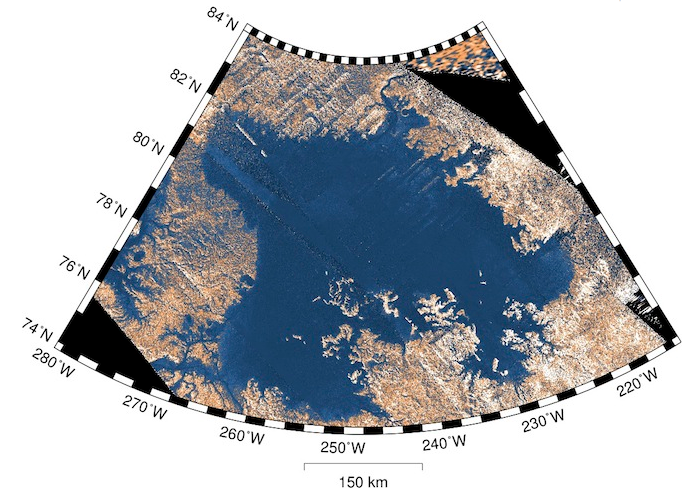We're open daily! View holiday hours
Science News
Earth-like Titan
January 19, 2012

Titan, Saturn’s largest moon, garners a lot of attention because it’s possibly the most Earth-like body in our Solar System. Even though Titan’s surface temperature is a cool –300 degrees Fahrenheit, it has lakes and streams, volcanoes, and an atmosphere (albeit one much denser than our own).
Recent studies have only drawn further similarities between the two. A paper published this week in Nature Geoscience describes how the lower atmosphere of Titan is highly structured, with two distinct layers that affect wind patterns, dune spacing and cloud formation. Earth’s lowest atmospheric layer also affects our climate and weather.
Earlier this month, Caltech researchers, publishing in Nature, used a computer model to describe Titan’s strange wet and dry patterns—lakes in the poles, drier areas in the lower latitudes and summer cloud clusters around the moon’s southern hemisphere. Satellite observations have shown these patterns exist, but scientists couldn’t understand their cause. The new computer model explains many of these phenomena in a relatively simple and coherent way through atmospheric circulation, similar to what we see on Earth.
Last month, an article in Geophysical Research Letters reported on Titan’s Earth-like balanced energy budget. Universe Today explains:
Energy balance (or “budget”) refers to the radiation a planet or moon receives from the Sun versus what it puts out. Saturn, Jupiter and Neptune emit more energy than they receive, which indicates an internal energy source. Earth radiates about the same amount as it receives, so it is said to be in equilibrium… similar to what is now shown to be the case for Titan.
Also in December, an international team of researchers (including representation from NASA Ames) proposed sending a new airplane mission to Titan called Aerial Vehicle for In-situ and Airborne Titan Reconnaissance (AVIATR). Publishing in Experimental Astronomy, scientists describe the potential $715 million mission to “focus on surface geology/hydrology and lower-atmospheric structure and dynamics”—in other words, the Earth-like features of Titan.
Finally, to view some images of the Saturnian moon and its sometimes uncanny resemblance to our planet, visit Wired to check out the article, “Titan: A Wet World Not Far From Earth.”
Image: Antoine Lucas, Oded Aharonson & The Cassini Radar Science Team, Caltech/JPL/NASA